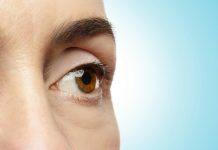
Art therapy, a creative form of expression that involves making art as a way to improve mental and physical health, has been gaining attention for its potential benefits in managing various health conditions, including high blood pressure.
This intriguing approach to wellness goes beyond traditional medications and lifestyle changes, offering a holistic and accessible method for individuals looking to maintain or improve their health.
High blood pressure, or hypertension, is a common condition that poses significant health risks, including heart disease and stroke.
It’s often referred to as a “silent killer” because it can progress without any obvious symptoms, making it crucial for those affected to explore various management strategies.
Amidst the array of treatments and recommendations, art therapy emerges as a unique ally, inviting colors, shapes, and textures into the battle against rising blood pressure levels.
The essence of art therapy lies in its ability to reduce stress, a known contributor to high blood pressure. Engaging in artistic activities such as painting, drawing, or sculpting provides a mental break from life’s stresses, leading to relaxation and a decrease in stress-related hormones.
This relaxation response is similar to what one might experience through meditation or deep-breathing exercises, but with a creative twist.
Research evidence supports the beneficial effects of art therapy on blood pressure. Studies have shown that participants who engage in regular art-making sessions report significant reductions in blood pressure levels.
One study observed a group of individuals with hypertension who participated in art therapy sessions for several weeks.
By the end of the study, not only did participants report feeling more relaxed and less stressed, but their blood pressure readings also showed noticeable improvements.
The theory behind why art therapy works involves the mind-body connection. Artistic expression offers an outlet for emotions, reducing stress and anxiety, which in turn, can positively affect physical health indicators like blood pressure.
Moreover, art therapy provides a sense of accomplishment and can enhance self-esteem, further contributing to its stress-reducing effects.
Beyond the psychological benefits, art therapy promotes a sense of community and connection. Group art therapy sessions create a supportive environment where individuals can share experiences and express themselves without judgment.
This social aspect is another avenue through which art therapy can lower stress levels and, by extension, blood pressure.
It’s important to note that art therapy is not a standalone treatment for high blood pressure but rather a complementary approach.
It works best when combined with other recommended lifestyle changes such as a healthy diet, regular exercise, and medication as prescribed by a healthcare provider.
Nonetheless, its accessibility and non-invasive nature make art therapy a valuable tool in the holistic management of high blood pressure.
In conclusion, the intersection of art and health offers a promising avenue for managing high blood pressure. Through the simple act of creating art, individuals can tap into a powerful resource for stress relief, contributing to better overall health and well-being.
As research continues to unfold, art therapy stands out as a testament to the healing power of creativity, offering a serene path to managing the pressures of life, both metaphorically and literally.
If you care about blood pressure, please read studies about how diets could help lower high blood pressure, and 3 grams of omega-3s a day keep high blood pressure at bay.
For more information about blood pressure,, please see recent studies that beetroot juice could help reduce blood pressure, and results showing cinnamon could help lower high blood pressure.
Copyright © 2024 Knowridge Science Report. All rights reserved.



